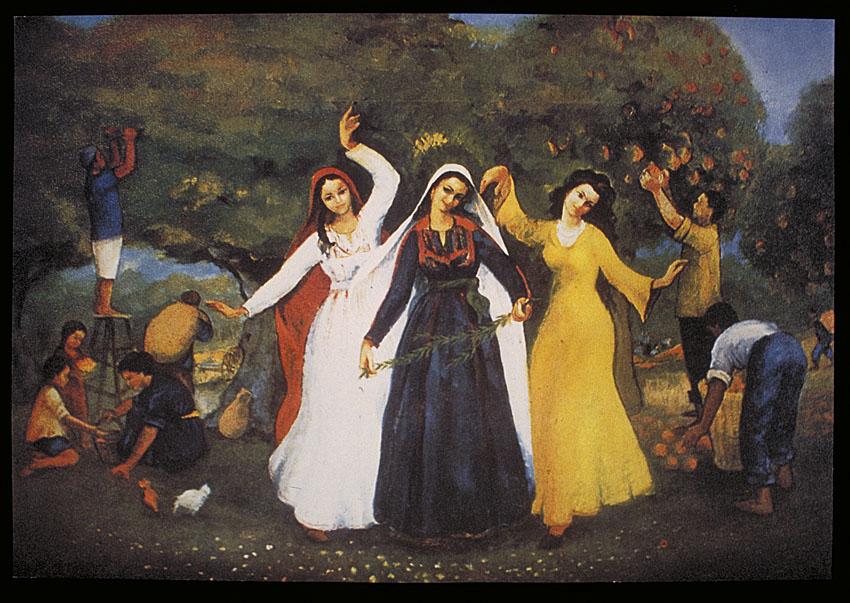EXCERPT
Portrait of the Artist (Palestinian) as a Political Man
Paula Stern
June 23, 1971
“Our revolution is a drop of blood, a drop of sweat, and a drop of ink” asserts a Fateh poster.
So it should not be surprising that Palestinian artists dabble in politics. The best-known
Palestinian artist, Ismail Shammout, for example, speaks of his art work in political terms,
“I’m happy that a landscape of a refugee camp or a tragic theme is hung in the house of rich
people because I do make people remember.”Ismail Shammout in his PLO office
Palestinian studio art was not born from the Palestinian Liberation Movement. But the June
War and the rise of the commando movement re-sensitized Palestinians who are expressing
their national identity by painting as well as skyjacking.
Poster art is most obvious. In Beirut, cultural capital of displaced Palestinians, the Fifth of
June Society – it’s name and founding date demonstrate the impact on Palestinian self-
consciousness of the Arab-Israeli War which started June 5, 1967 – raises funds by selling
poster size reproductions of works of Arab artists that appeal to the more sophisticated taste
of wealthy patrons and the Western educated.
The Popular Front for the Liberation of Palestine (PFLP), the group responsible for last
September’s epidemic of sky-jackings, produces earthier specimens for recruiting posters in
refugee camps. One “Uncle Sam Wants You.” appeal with an oriental twist is pitched to the
family, the basis of Arab society. A determined commando poses clutching his gun; in thebackground his parents stand near a refugee camp; and behind that is a barbed wire
enclosed village. The caption reads: “THIS IS OUR SON. WHERE IS YOURS?”
New Shammout posters Inbox x Dan Walsh 7:23 AM (1 hour ago) to Bashar http://www.palestineposterproject.org/special-collection/the-spring-that... ya Bashar, Can you help me with the actual/real titles of these posters? Were they published by the PLO? What year, ya'ni? tadamon, Dan Bashar Shammout 8:04 AM (49 minutes ago) to me Hi Dan, I really appriciate your work on this project. So please give me a day or two, and I'll ask my mother about the poster and the paintings and will get back to you. Salamat Bashar Gesendet: Freitag, 08. März 2013 um 13:23 Uhr Von: "Dan Walsh" An: "Bashar Shammout" Betreff: New Shammout posters

